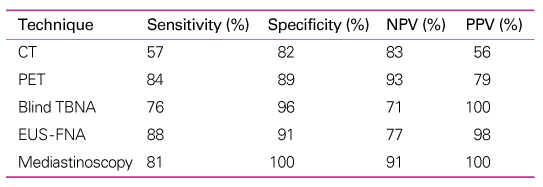1. Mountain C. Revisions in the International System for Staging Lung Cancer. Chest 1997;111:1710-1717.
2. Silvestri GA, Tanoue LT, Margolis ML, Barker J, Detterbeck F. The noninvasive staging of non-small cell lung cancer: the guidelines. Chest 2003;123:147S-156S.
3. Rami-Porta R, Ball D, Crowley J, Giroux DJ, Jett J, Travis WD, Tsuboi M, Vallières E, Goldstraw P. International Staging Committee. Cancer Research and Biostatistics, Observers to the Committee, Participating Institutions. The IASLC Lung Cancer Staging Project: proposal for the revision of the T descriptors in the forth coming (seventh) edition of the TNM classification for lung cancer. J Thorac Oncol 2007;2:593-602.
4. Rusch VW, Crowley J, Giroux DJ, Goldstraw P, Im JG, Tsuboi M, Tsuchiya R, Vansteenkiste J. International Staging Committee. Cancer Research and Biostatistics, Observers to the Committee, Participating Institutions. The IASLC Lung Cancer Staging Project: proposal for the revision of the N descriptors in the forth coming (seventh) edition of the TNM classification for lung cancer. J Thorac Oncol 2007;2:603-612.
5. Lardinois D, Weder W, Hany TF, Kamel EM, Korom S, Seifert B, von Schulthess GK, Steinert HC. Staging of non-small-cell lung cancer with integrated position-emission tomography and computed tomography. N Engl J Med 2003;348:2500-2507.
6. Silvestri GA, Gould MK, Margolis ML, Lardinois D, Weder W, Hany TF, Kamel EM, Korom S, Seifert B, von Schulthess GK, Steinert HC. Noninvasive staging of non-small cell lung cancer ACCP Evidence-based clinical practice guidelines, 2nd ed. Chest 2007;132:178S-201S.
7. MacDonald SL, Hansell DM. Staging of non-small cell lung cancer: imaging of intrathoracic disease. Eur J Radiol 2003;45:18-30.
8. Weder W. Lung cancer: new opportunities-changing algorithm in staging. Ann Oncol 2008;19:28S-30S.












